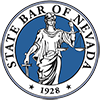Insurer’s Duty to Defend
In Nevada, an insurer’s duty to defend begins upon receiving notice of a claim and continues until the claim is resolved. This duty is broad and is intended to protect insured parties not only for the claims which they are liable but also for the claims which they may be found liable.
(Article continues below Infographic)
![The Duty to Defend in Nevada [infographic] 1 infographic_Duty to Defend_bad faith insurance attorney nevada](https://mattsharplaw.com/wp-content/uploads/2023/04/The-Duty-to-Defend-in-Nevada-infographic.jpg)
______
However, this duty is not unlimited. It depends on the types of risks that are covered and identified within the policy. Insured parties need only show that the underlying claim falls within coverage parameters identified within the policy. Conversely, insurance companies have a higher burden of proof to show that the duty to defend does not exist; insurance companies must show facts that demonstrate the reasons no possibility for coverage exists.
Individuals whose insurance company breaches the duty to defend can pursue damages including reasonable costs associated with defending the claim. These costs can include attorney’s fees, time away from work, filing fees, etc. Nevada also allows individuals to pursue consequential damages, i.e. for damages occurring because of the delay of the claim, including lost production capacity, emotional distress, etc.
The Difference Between Duty to Defend & Duty to Indemnify
Insurance companies have the responsibility of covering an insured’s legal liability to the point identified within the policy. This “duty to indemnify” is often clearly stated within the policy. However, what many consumers don’t know is that the insurance company also has a duty to defend that goes beyond the stated policy limits. This duty includes covering legal fees and costs associated with protecting the insured party from claims and damages beyond the policy limit.
Be Wary, But Not Afraid of “Hold Harmless” Provisions
Many businesses have included clauses within contracts that are designed to protect them against the effects of a lawsuit. These “hold harmless” provisions are intended to keep insured parties from pursuing claims against their own insurer, or the insurer of companies or individuals they may have business with.
Fortunately, the Nevada Supreme Court has largely sided with individuals in these cases and issued a series of rulings that protect individuals from these clauses. The result is that while an insurance company or business partner may claim they are to be “held harmless” for certain claims, the courts have ruled just the opposite. It is not uncommon for the courts to decide that the insurance companies indemnity provisions are too narrow and designed to protect them from providing reasonable levels of coverage for their clients.
Common Examples of “Bad Faith”
There are many ways that insurance companies may act in bad faith and fail to defend their clients. For example, the insurance company can fail to investigate the claim in a thorough and timely manner. This can push the issue beyond policy requirements and cause the corresponding statute of limitations to elapse. Similarly, the company may fail to offer a reasonable settlement in an appropriate amount of time. This delay in payments can cause significant financial burdens for the insured. These burdens can have subsequent consequences such as missed house payments, interest accrual, etc.
Other examples of insurance companies acting in bad faith and failing to properly defend their clients include concealing facts of the case from the insured party, harassing the client during the investigation of the claim, or making threats towards the insured party. In some cases, insurers may also deliberately fail to inform clients of the existence of additional benefits and policy coverage. If an insurance provider is guilty of any of these, then they have breached their duty to defend and duty to indemnify their clients.
Pursuing Bad Faith Claims
When an insurance company breaches their duty to defend or indemnify, individuals have the right to file suit against them. This process involves the following steps:
Documentation – It is crucial to document the conversations with, and any information provided by, representatives of the insurance company. This includes dates, times, and copies of every piece of information that has been transmitted.
Review – Clients can request the insurer review and reconsider the denial of a claim. If the company refused to reverse the denial, then individuals can request the state to review the claim.
Filing Suit – If the company refuses, and the state does not compel the company to cover the claim via the regulatory appeal process, then individuals and their bad faith insurance attorney in Nevada may file suit. This may occur in state or federal court depending on the specifics of the case.
Trial/Settlement – Following discovery, depositions, etc., the case may go to trial or through the settlement process. In either case, it is imperative to present the strongest evidence possible showing that the insurance company is responsible for the claimed coverage and protections listed within the insurance policy.









